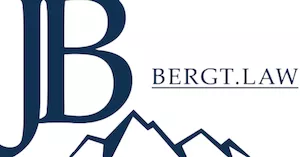- within Technology topic(s)
- within Law Practice Management topic(s)
- with readers working within the Consumer Industries and Oil & Gas industries
When the European Banking Authority ("EBA") released its 34‑page No‑Action Letter on 10 June 2025, it did rather more than grant a temporary supervisory reprieve to crypto‑asset service providers ("CASPs") transacting electronic‑money tokens ("EMTs"); it exposed, with almost surgical precision, the structural incongruities created by the parallel application of the Markets in Crypto‑Assets Regulation ("MiCAR"), the Second Electronic Money Directive ("EMD2") and the Second Payment Services Directive ("PSD2"), thereby compelling practitioners, regulators and market participants alike to reassess the very fault‑lines along which token‑based payment activity is to be regulated in the near future, all while the forthcoming PSD3/Payment‑Services Regulation ("PSR") package is still being negotiated.
In a commentary, Minto and de Arruda (2025) describe the Letter as an "extra‑legislative plaster" that slows, but cannot heal, the widening gap between MiCAR's token‑specific regime and PSD2's technology‑neutral approach to payment services; yet they also acknowledge that, absent such forbearance, the immediate imposition of a dual‑licensing obligation on every EMT‑handling CASP would have risked choking innovation and fragmenting the Single Market before MiCAR had even celebrated its first birthday.
This article seeks to distil the practical consequences of the unprecedented EBA intervention for firms at the intersection of crypto asset and payment services, while offering concrete, business‑oriented recommendations for navigating the interstitial period that will end on 2 March 2026.
- The Regulatory "Trilemma" in a
Nutshell
- Tri‑layer exposure. An EMT is, by statutory law fiat (MiCAR Art 48 (2)), simultaneously a crypto‑asset, electronic money and "funds" under PSD2; each status drags into play a separate licensing perimeter, prudential baseline and conduct rule‑set.
- Circular exclusions. MiCAR Art 2 (4)(c) excludes "funds" from its scope unless they are EMTs, while PSD2 automatically reincorporates EMT activity as a payment service—a drafting ouroboros that the EBA openly criticises.
- Capital duplication. The Letter points out the issue that initial‑capital and ongoing prudential own‑funds thresholds accrue cumulatively, yet prohibits double‑counting, thus raising the floor for hybrid business models.
- What the No‑Action Letter Actually Does
- Scope carve‑outs. Until 1 March 2026, NCAs are invited not to enforce PSD2 authorisation requirements for (i) EMT transfers on behalf of clients, (ii) EMT custody/administration, and (iii) execution of EMT‑denominated payment orders—provided the CASP already holds (or is applying for) a MiCAR licence.
- Priority matrix. Key PSD2 cornerstones—strong customer authentication ("SCA") and fraud‑reporting—remain non‑negotiable, whereas open‑banking interfaces, detailed fee‑disclosure and maximum‑execution‑time rules may be "de‑prioritised".
- Transition pathway. CASPs are encouraged either to obtain a full payment‑institution ("PI") licence through a streamlined dossier or to partner with a licensed PI; from 3 March 2026 onward, operating without one of those arrangements becomes supervisory non‑compliance.
- Liechtenstein‑Specific Touchpoints
- VT‑Dienstleister under Transition: Entities that carried forward their Token‑ andVT‑Dienstleister (national VASP) registrations into the MiCAR era can rely on Art 143 MiCAR and the EBA's supervisory forbearance, but must still evidence proportional own funds and a formal risk‑management framework consistent with both TVTG and MiCAR Title V.
- FMA Convergence Duty: Under Art 5 (5) FMAG, the Liechtenstein FMA is legally bound to align its supervisory tools with EU convergence instruments—including EBA Opinions—making a "no‑action" approach de jure persuasive rather than merely facultative, as it has not been implemented into the EEA acquis.
- Prudential Budgeting: Given the cumulative application of MiCAR Annex IV and PSD2 Art 7 thresholds, a Liechtenstein CASP upgrading to a de novo PI licence should model a permanent minimum capital of at least EUR 250,000 (class 2 CASP + PIS), subject to upward adjustment where EMT volumes exceed model‑one own‑funds bands.
- Strategic Options for Market Participants
|
Timeline |
Compliance Lever |
Practical Action |
Business Upside |
|
Q3 2025 – Q1 2026 |
Optimise MiCAR dossier |
Map each EMT‑related workflow against MiCAR Annex I services; isolate payment‑service‑like elements; document SCA controls. |
Sustain operations without PSD2 licence while building supervisory goodwill. |
|
Q3 2025 – post-2026 |
PI licence "lite" |
Leverage Art 62 (4) MiCAR cross‑use of documentation; negotiate capital‑waiver adjustments under PSD2 Art 9 (3). |
Early mover advantage once PSD3/PSR passport is live. |
|
Q1 2026 |
Strategic partnership |
Conclude white‑label agreement with an EU PI/EMI for EMT transfers; embed waterfall SLA into smart‑contract logic. |
Faster market entry; shared compliance cost. |
|
Post‑2026 |
Licence consolidation |
Monitor PSD3 "equivalence‑exemption" debates; lobby for single‑licence solution via industry bodies. |
Reduced regulatory friction; capital efficiency. |
- Unresolved Questions (and How to Prepare)
- Is a custodial wallet a "payment account"? The EBA says "yes, functionally," but leaves PAD obligations in limbo; firms should design APIs as if future open‑finance legislation will mandate access.
- Can MiCAR own‑funds substitute PSD2 capital? Not today; however, draft Council text (13 June 2025) contemplates risk‑weighted offsets—monitor trilogue minutes.
- What if EMT lending is bundled with payment functionality? Neither MiCAR nor PSD2 addresses this hybrid risk stack; bespoke legal structuring (e.g., secured loan tokens ring‑fenced from payment rails) remains advisable.
- Conclusions for Decision‑Makers
The EBA's No‑Action Letter is, in effect, a 30 page spanning last minute sandbox or critics may argue band-aid to the new MiCAR legislation that buys legislators and supervisors time to craft a coherent, technology‑agnostic payments framework. While from a legislative perspective the No-Action Letter regime arguably was not intended for such purposes it brings fintech startups in the crypto asset and - payment sectors a time period – albeit short and an apparently arbitrarily chosen deadline of March 02, 2026 - to prepare and align accordingly; yet the price of that breathing space is proactive, board‑level strategic planning—particularly in capital budgeting, SCA rollout and cross‑border licensing—lest firms find themselves scrambling on 3 March 2026.
Key Findings & Core Statements
- The EBA No‑Action Letter suspends PSD2 authorisation enforcement for core EMT services until 2 March 2026.
- MiCAR and PSD2 capital requirements accumulate; CASPs should budget for at least EUR 250k permanent capital when adding payment services.
- The Liechtenstein FMA is de facto legally incentivised to follow the EBA forbearance owing to FMAG Art 5 (5), providing local market stability.
- Strategic options include early PI licensing, white‑label partnerships, or licence consolidation once PSD3/PSR introduces an equivalence carve‑out.
- Uncertainties linger around custodial‑wallet status, capital substitution, and EMT‑linked lending, warranting continued monitoring and agile legal structuring.
For bespoke advice on how the No‑Action Letter and forthcoming PSD3/PSR package affect your crypto asset and payment strategy, please contact the authors at Bergt Law, Vaduz.
References
- European Banking Authority. (2025). Opinion on the interplay between PSD2 and MiCA in relation to crypto‑asset service providers that transact electronic‑money tokens (EBA/Op/2025/08).
- Minto, , & de Arruda, T. (2025). Regulating e‑money tokens at the intersection of MiCAR and PSD2: Legal ambiguities and the EBA's no‑action letter. EU Law Live, 4 July 2025.
The content of this article is intended to provide a general guide to the subject matter. Specialist advice should be sought about your specific circumstances.


